4 May 2019
One year
Posted by Jessica Ball
I’ve delayed writing about my involvement in last summer’s Kilauea eruption for a number of reasons. One is because I wanted to wait until the USGS has had a chance to publish the preliminaries of the eruption; others are more personal, involving my experience working with the communities affected and the people responding to the eruption. But now that the one-year anniversary of the start of the eruption has come around, I feel like a little self-reflection is warranted.
A volcanic crisis of any kind can be a harrowing experience, but being a science communicator means you get hit with it from two angles. On one hand, you’re both excited about the scientific opportunities the eruption gives you and the chance to exercise the skills you usually practice when volcanoes are quiet. On the other hand, you’re an intermediary between the scientists, the emergency responders, the people who are caught up in the crisis, and everyone else in the world, including not only the traditional media but an entire digital audience. It’s a kind of stress and anxiety and responsibility that’s hard to describe, and even harder to let go of.
In the moment, I had to let a lot of my own emotions go unacknowledged so I could focus on my job, and on the people I was interacting with. Sometimes it was impossible to do that, simply because of shared human empathy: talking with residents who’d lost their homes, looking up photos and video for those who weren’t sure if their homes had survived, getting permission to scout out new ground cracks in people’s yards with the field teams. I was also watching the Hawaiian Volcano Observatory staff deal with the fact that their scientific home was lost to them, which in some ways was as harrowing as losing a real one. There was no way to separate the emotion from the science at times.
Add into the mix that everyone was bone-tired, rattled by earthquakes, besieged by requests from the media, and spending all their time driving back and forth between two different eruption sites, emergency centers, distant lava breakouts, briefings, meetings, and their homes, and you have a recipe for traumatic stress impacts. I had my moments of breakdown during the summer, but I always felt like it wasn’t something that I should make a big deal about. Other people were even worse off, and besides, I hadn’t lost a home; what right did I have to ask anyone to take on my emotional burden?
It wasn’t until after everything quieted down and I actually had some time to process what I’d been through. I’d spent more than a month that summer shuttling between an improvised volcano observatory and a post-apocalyptic fever dream. I’d empathized with people who’d lost their homes, their possessions, the places they’d loved and worked for. I’d been on the receiving end of their distress and anger and gratitude and amazing generosity of spirit. There’s no way that you go unmarked by something like that, and I’m still learning how it’s changed me.
There are moments that stand out vividly in my head:
The crunching sound of pumice being crushed underfoot – just like icy snow – as I walked toward a lava fountain down a neighborhood street, past empty, dark houses.
Sitting on the rock wall outside the Volcano House and gazing into the massive collapsing caldera at Kilauea’s summit, feeling the rock shiver like hard jello underneath me as earthquakes struck every few seconds.
Hugging a woman who’d just told me that she was planning to get her horses and animals off her property before the lava came, but that she wasn’t sure she could bear to leave it herself.
Jumping over a crack that had come up right in the middle of someone’s back yard and passed under their house, and not being able to see the bottom.
Watching two police officers silhouetted against an orange-and-black sky and swiftly-flowing lava river and feeling the heat of the molten rock from a mile away.
Hearing nothing but the patter of pumice falling all around, and switching off my headlamp because the light of Fissure 8 was enough to see by.
Scientists who study natural disasters can be deeply affected by participating in emergency responses, as can other first responders, civil authorities and decisionmakers. It’s an aspect of volcanology that I hadn’t anticipated dealing with until after the Kilauea 2018 response. The experience has changed me; I still have a few sleepless nights, a little bit of survivor’s guilt, some residual anxiety over what I could have done better. But I’m also sincerely grateful to the people I met and worked with, the ones who still managed to joke even though they’d lost their homes, the ones who brought us lunches and cookies while we worked, the kind words of thanks that filtered through the barrage of online conversations.
I would do it all over again. And, because of what I’ve decided to do with my career, I know I will someday. And I’ll learn a little more each time.


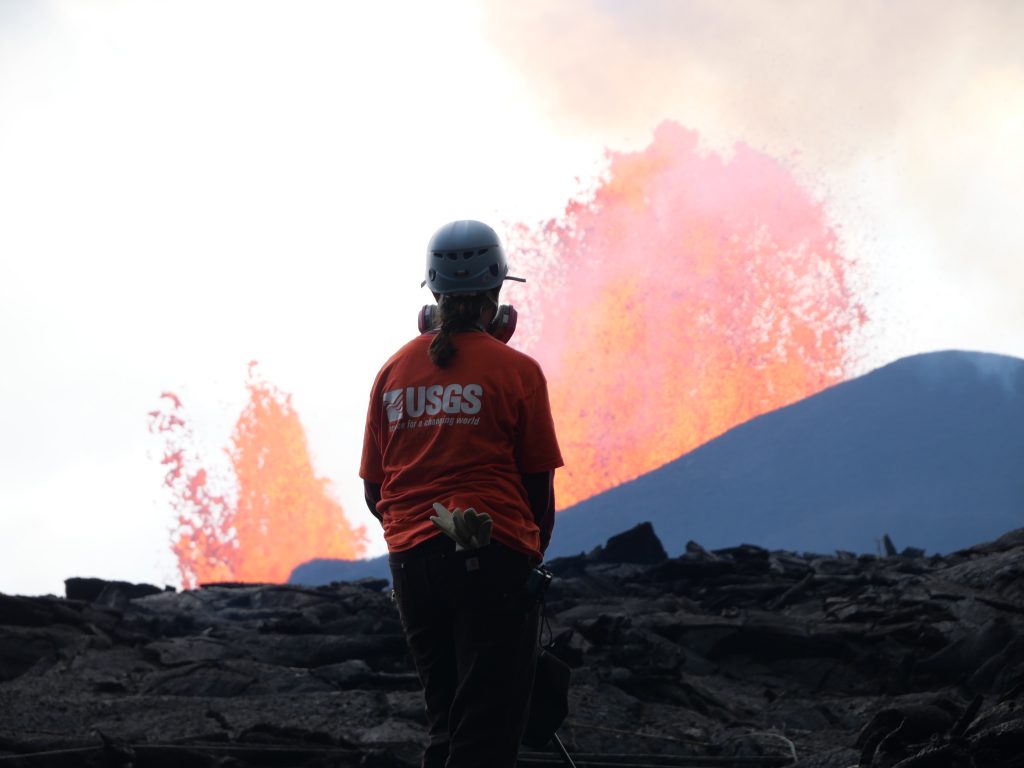
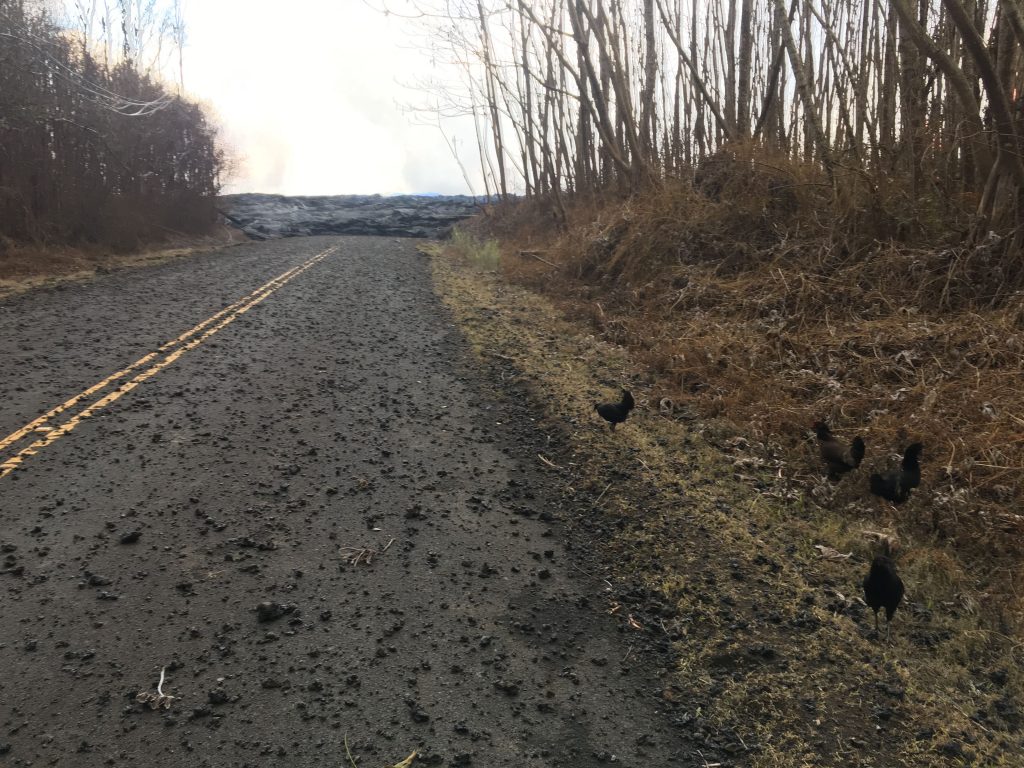

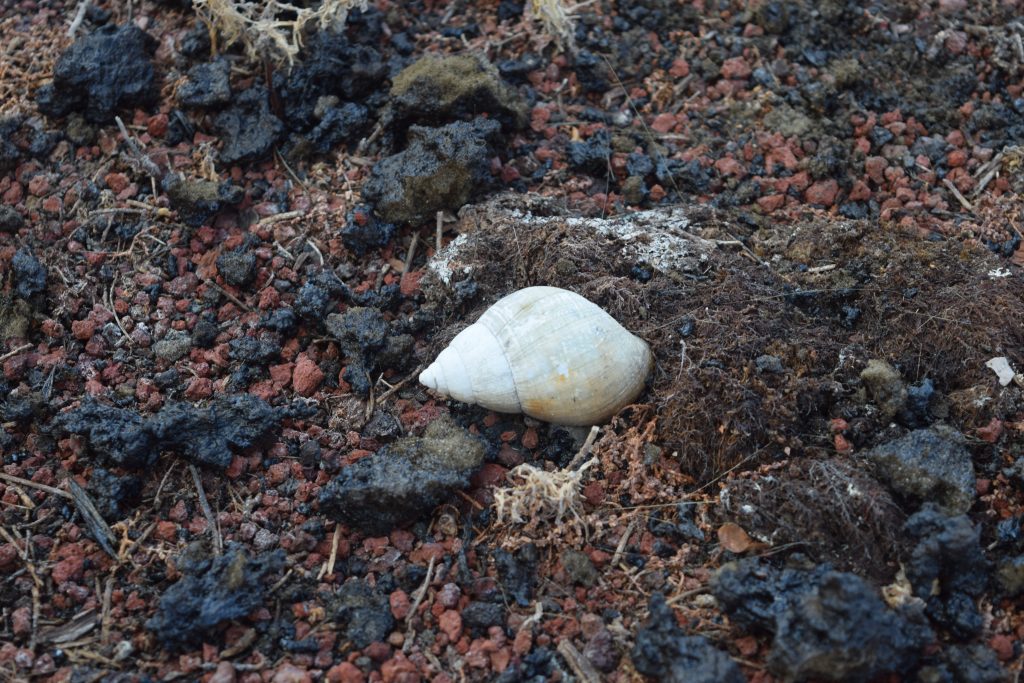
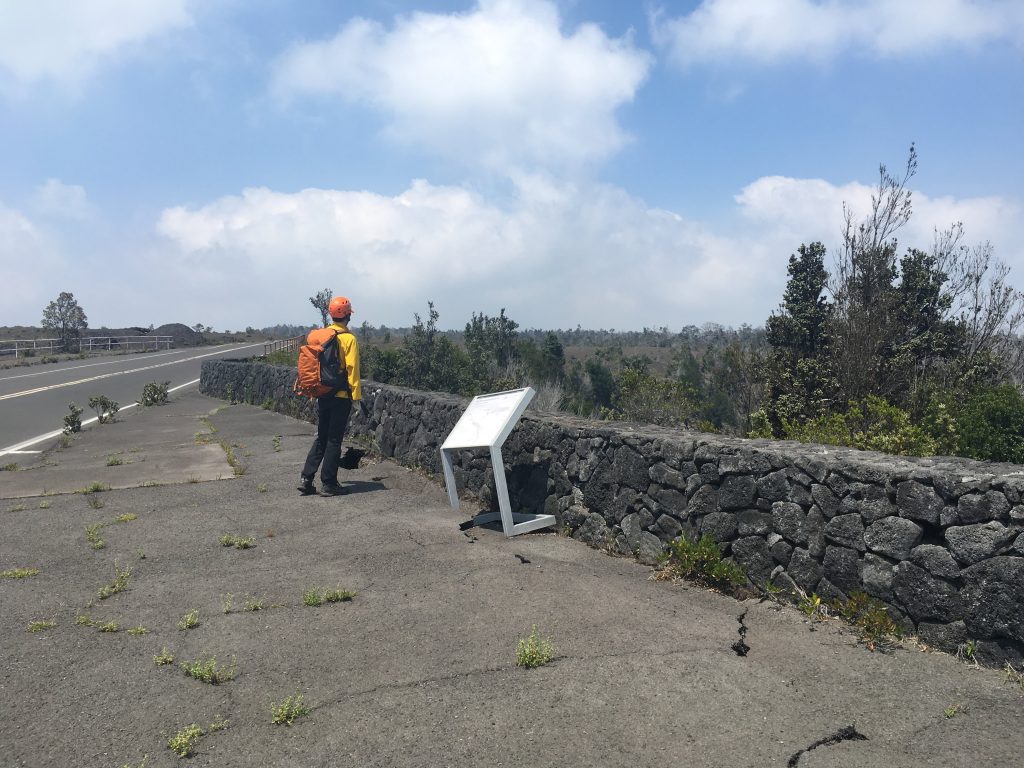
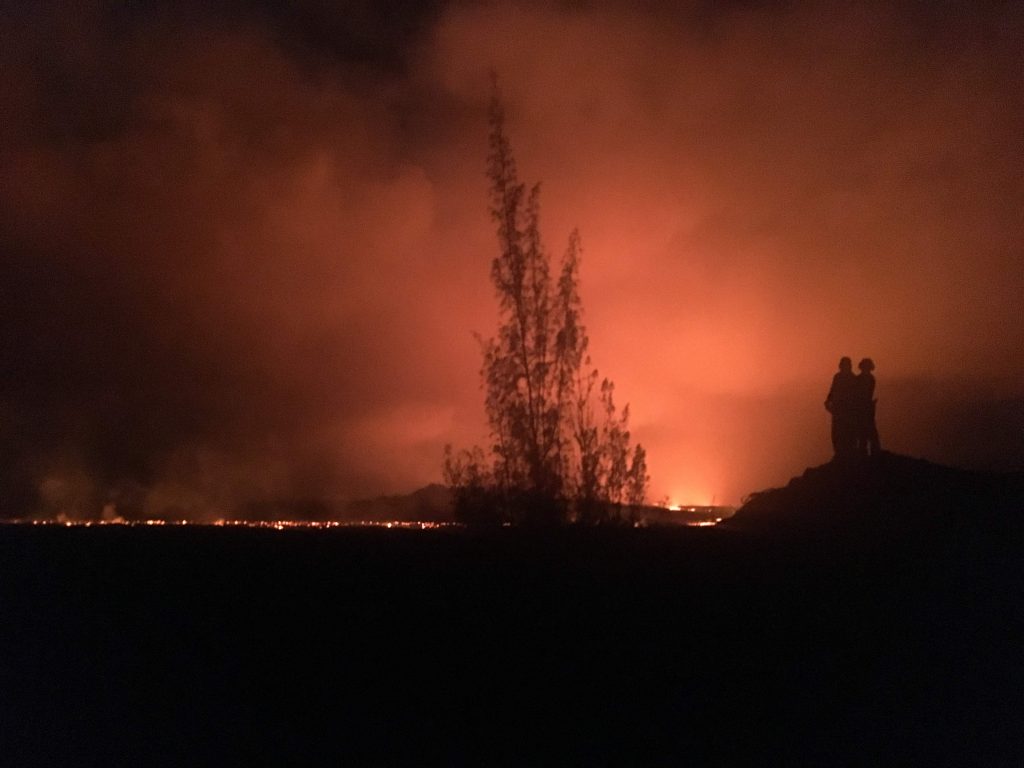

 Jessica Ball is a volcanologist at the U.S. Geological Survey, researching volcanic hydrothermal systems and stability, and doing science communication for the California Volcano Observatory. She previously worked at the Geological Society of America's Washington DC Policy Office, learning about the intersection of Earth science and legislative affairs. Her Mendenhall postdoc and PhD focused on how water affects the stability of volcanoes, and involved both field investigations and numerical modeling applications. Her blogging covers a range of topics, from her experiences in academic geosciences to science outreach and communication to her field and lab work in volcanology.
Jessica Ball is a volcanologist at the U.S. Geological Survey, researching volcanic hydrothermal systems and stability, and doing science communication for the California Volcano Observatory. She previously worked at the Geological Society of America's Washington DC Policy Office, learning about the intersection of Earth science and legislative affairs. Her Mendenhall postdoc and PhD focused on how water affects the stability of volcanoes, and involved both field investigations and numerical modeling applications. Her blogging covers a range of topics, from her experiences in academic geosciences to science outreach and communication to her field and lab work in volcanology.
“Safely” sitting on the foot of a mountain strewn with skolithos, metarhyolite outcroppings, and wave-worn boulders a thousand feet above sea-level, I hear you saying, from a place where change is not only visible, but perceivable with every sense, that of people, places, and things, it’s people we need to notice and care-for.
Of course, in so-doing, we help with the places and things.
Thank you for helping me hear that.
That’s a very moving account of what you go through as a volcanologist during a major volcanic crisis in these modern times. Having experienced similar – though not as destructive and huge – events as a volcanologist at Mount Etna (Italy) myself, most recently in December 2018, I know the tiresome aspect of work in such a crisis, and the delicate choices one has to make when wording information to the public and to the media. We were pretty much exhausted after more or less one week of crisis at Etna in December 2018, difficult to imagine nearly four months under much more dramatic conditions as those you went through at Kilauea! Thank you for this fine article.
This was really great, thank you!
Mahalo nui loa Jessica for ALL you’ve done and continue to do!
I am so glad you wrote this, Jessica. Scientists are not impartial, “computer like” observers. There is a toll taken on all of you. On one hand, you’re experiencing the phenomenon you have studied and for which you have “prepared”, academically. On the other, you experience a very human level, to which you cannot remain impartial. It’s a lesson for a generation, and thank you for sharing.
Thanks for the perspective, Jessica. I had my own working disaster experience this past year, albeit on a much different time scale. Dropping, covering under my work desk, and holding on as M7.1 hit, with an epicenter under a nearby area where I love to ride my bike. Trying to calm my heart rate as audible alarms followed, continuing while my colleague and I tried to pin down the magnitude and epicenter as quickly and accurately as possible. Being on the phone to FEMA during the first significant aftershock, which had me looking around for a place to hide again. Following established procedures while trying to unravel the local tsunami threat and effectively communicate that process to a stressed-out populace in the region. Not having a chance to check on my own home or husband for an uncomfortably long time. Finishing the day with a body that ached beyond belief considering I’d been only sitting/standing/walking all day and I like to consider myself an athlete. The stress in a natural hazard response definitely takes a surprising toll both mentally and physically, and I can only imagine what it must be like for a much more drawn out event like an eruption. Thank you to you and your coworkers at USGS for what you do, we NOAA folks hold you in high regard 🙂
sensitive and descriptive post… tx…. i was returning from a field trip in eastern Oregon when St. Helens blew… the memory of that enormous ash cloud has stayed with me like a bad dream… and then home to streets and roofs covered with ash… things one doesn’t forget… (i have a bachelor’s from Portland State univ.)
Jessica, It’s good to see that side of it presented. Being a geologist, I can relate to the excitement of seeing something like that, but then being brought up short by the realization that real people are being affected deeply. I can only imagine how much more intense it must be to actually be there, and meet the people, and see their loss as it happens. You were wise to give yourself time to reflect and process it before you wrote. Not many on the internet do that!
I’ll keep youu in prayer as you continue to process it.
And thank you for an excellent blog!